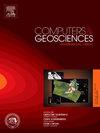地质知识引导图自监督预训练框架识别矿化相关地球化学异常
IF 4.4
2区 地球科学
Q1 COMPUTER SCIENCE, INTERDISCIPLINARY APPLICATIONS
引用次数: 0
摘要
与成矿有关的地球化学异常的识别是预测矿产资源存在的关键。图神经网络具有处理空间相关数据的能力,是识别与矿化相关的地球化学异常的重要工具。然而,监督学习模型的性能和泛化性常常受到标签数据可用性有限的限制。因此,图自监督学习(SSL)受到了相当大的关注,因为它能够通过捕获数据的内在结构和分布来加强表示学习,即使在标记数据稀缺的场景中也是如此。现有的SSL方法在学习过程中往往不能有效地整合特定于领域的知识,限制了SSL模型的泛化和地质可解释性。为此,本文提出了一种地质知识引导图与自监督预训练(GKGP)框架。GKGP框架通过将矿床空间密度及其与控矿因素的距离之间的幂律关系嵌入到SSL的预训练阶段,并结合基于变压器的多头注意机制,大大增强了SSL模型捕捉重要空间关系和地球化学特征的能力。在中国湖北省绥藻区进行的一个案例研究表明,即使在高强度的数据扰动下,所提出的GKGP框架也可以用于识别矿化相关的地球化学异常,并保持稳健的预测性能。此外,先验地质知识的整合显著提高了SSL模型的准确性和可解释性,确保了复杂条件下的鲁棒性。提出的预训练策略为指导研究区今后的矿产勘查提供了可靠的地球化学信息。本文章由计算机程序翻译,如有差异,请以英文原文为准。
Geological-knowledge-guided graph self-supervised pretraining framework for identifying mineralization-related geochemical anomalies
The identification of geochemical anomalies related to mineralization is crucial for predicting the presence of mineral resources. Graph neural networks are essential tools in identifying geochemical anomalies associated with mineralization owing to their ability to process spatially correlated data. However, the performance and generalizability of supervised learning models are often constrained by the limited availability of labeled data. As such, graph self-supervised learning (SSL) has received considerable attention because of its ability to strengthen representation learning by capturing the intrinsic structure and distribution of data, even in scenarios in which labeled data are scarce. The existing SSL methods often fail to effectively incorporate domain-specific knowledge during the learning process, restricting both the generalization and geological interpretability of SSL models. As such, a geological-knowledge-guided graph with self-supervised pretraining (GKGP) framework was proposed in this study. The GKGP framework substantially enhanced the SSL model's ability to capture important spatial relationships and geochemical features by embedding the power-law relationship between the spatial density of mineral deposits and their distance to ore-controlling factors into the pretraining phase of the SSL, which is combined with a transformer-based multi-head attention mechanism. A case study was conducted in the Suizao District, Hubei Province, China, to demonstrate that the proposed GKGP framework can be used to identify mineralization-related geochemical anomalies, even under high-intensity data perturbations, maintaining robust predictive performance. Additionally, the integration of prior geological knowledge notably increases the accuracy and interpretability of the SSL model, ensuring robustness under complex conditions. The proposed pretraining strategy provides reliable geochemical insights to guide future mineral exploration in the study area.
求助全文
通过发布文献求助,成功后即可免费获取论文全文。
去求助
来源期刊

Computers & Geosciences
地学-地球科学综合
CiteScore
9.30
自引率
6.80%
发文量
164
审稿时长
3.4 months
期刊介绍:
Computers & Geosciences publishes high impact, original research at the interface between Computer Sciences and Geosciences. Publications should apply modern computer science paradigms, whether computational or informatics-based, to address problems in the geosciences.
 求助内容:
求助内容: 应助结果提醒方式:
应助结果提醒方式:


